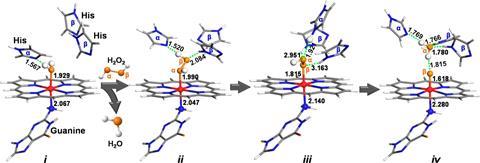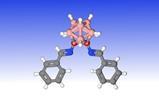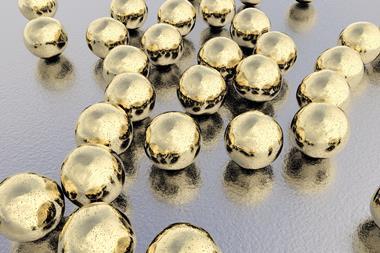Nanoparticle, nucleic acid and peptide trio mimics peroxidase enzymes

A nanoparticle with a catalytic turnover on a par with a biological enzyme has been constructed by researchers in China. Such an entity takes us one step closer to materials with the catalytic power of proteins without their drawbacks or complexity.
Qing Liu of the National Center for Nanoscience and Technology, Beijing and colleagues have developed a catalytic haemin-containing nanoparticle with self-assembled guanine-rich nucleic acid/histidine-rich peptide components. The synthetic ‘enzyme’ mimics the active site and activity of haemoproteins and has a turnover number on the order of peroxidase enzymes.
Enzymes play a vital role in all living cells, speeding up tardy chemical reactions that would otherwise be so slow as to preclude life processes. There are tens of thousands of enzymes, each of which specialises in a particular reaction or class of reactions. Some duplicate the functionality of others but biological scientists would like to understand how they work and chemists would like to know how to use them for their own reactions. In recent decades industry has made wide use of enzymes to conduct a range of syntheses.
However, cells and proteins have handling and processing problems. As such, one goal of studying enzymes is to find a way to strip them back to the bare essentials to find a system that has the functionality an enzyme but without the rest of the protein. Liu and colleagues have now taken a step towards creating an entirely synthetic ‘enzyme’. They used the tools of molecular biology to bring together nucleic acid and peptide components in a single particle that work synergistically to form an active site.
The activity of the hybrid nanoparticle depends strongly on the guanine-rich DNA, which acts as a molecular scaffold for the haemin cofactor. The presence of the histidine-rich peptide endows the nanoparticle with the essential activating groups for the redox catalysis of peroxide.

From a practical perspective, this system might be used not as a catalyst but as a DNA sensor given that activation is possible with a mere 0.2 nanomolar concentration of guanine-rich DNA in solution, or as a proteinase sensor as the cleavage of the target peptide deactivates the synthetic enzyme. More fundamentally, the team hints that these systems may well have been the precursors of protein enzymes in the prebiotic RNA world model of the origin of life on Earth.
Ljiljana Fruk of the University of Cambridge, UK, explains how molecular biology, enzyme modification, de novo synthesis and reconstitution of cofactors has brought us to the point where we can now mimic enzymatic activity using only the most essential structural parts of natural enzymes. ‘This paper demonstrates that by using simple and robust biomolecules such as peptides and DNA in combination with cofactors, enzymatic activity can not only be mimicked but also enhanced. It is an excellent contribution to the growing field of artificial enzyme design and green catalysis.’
References
Q Liu et al, ACS Nano, 2017, DOI: 10.1021/acsnano.7b03195

















No comments yet